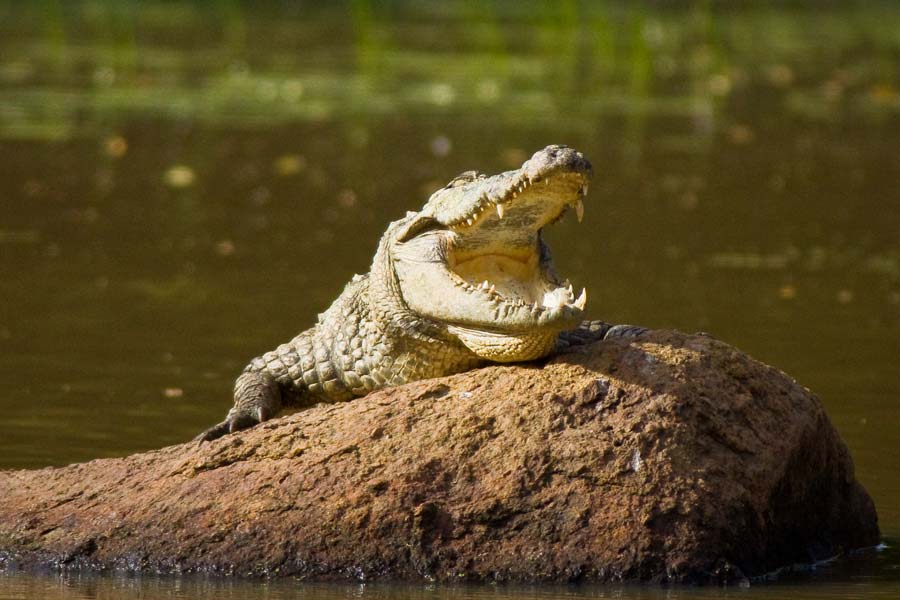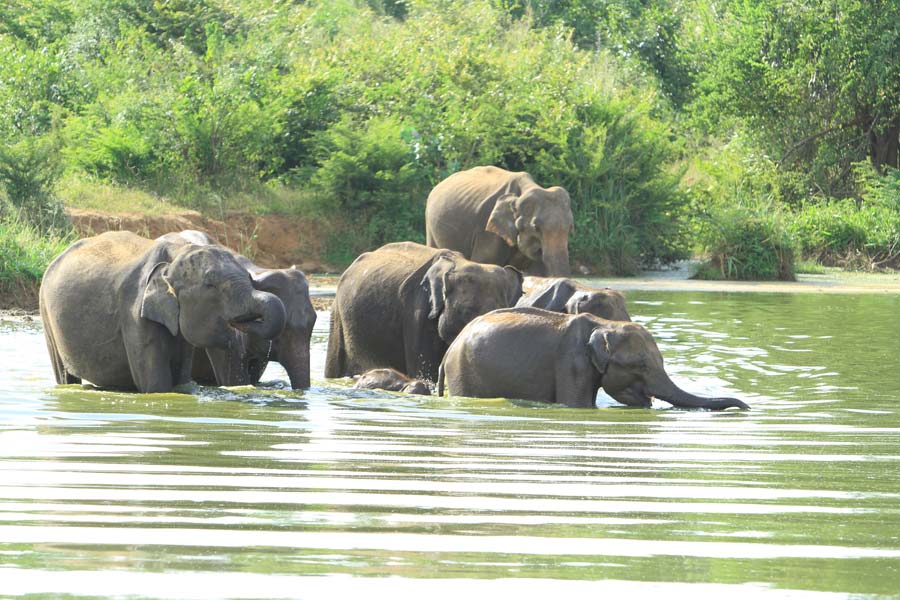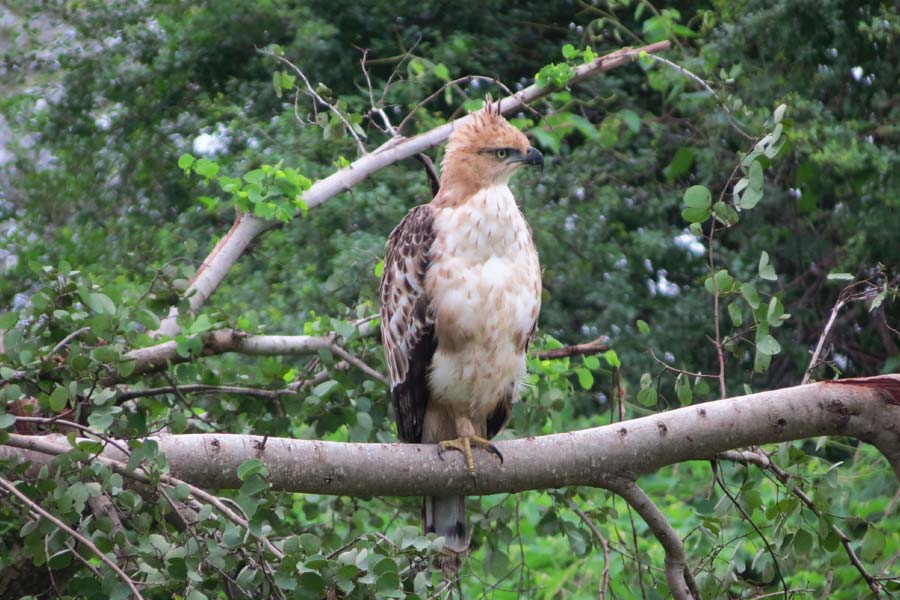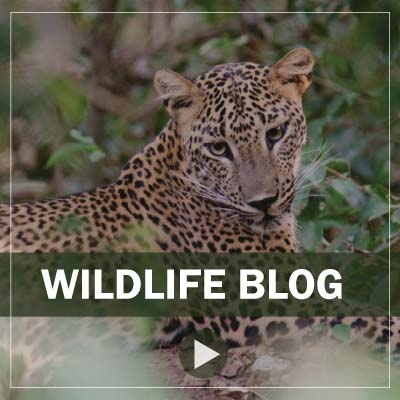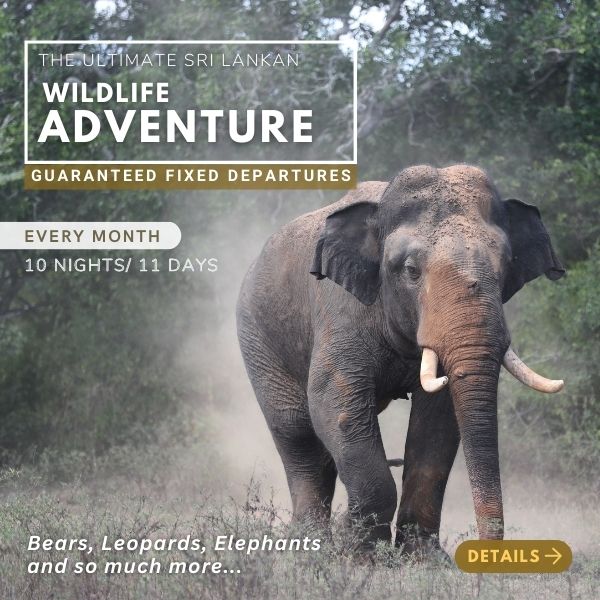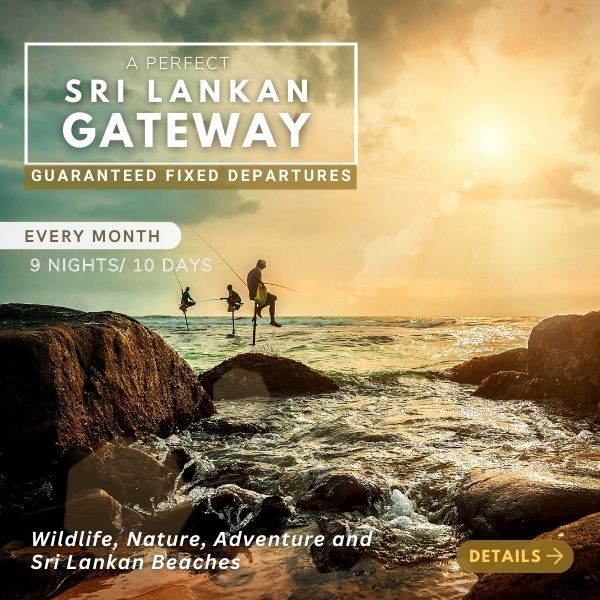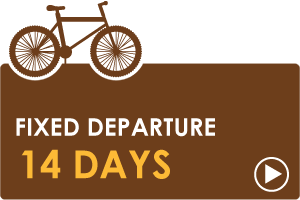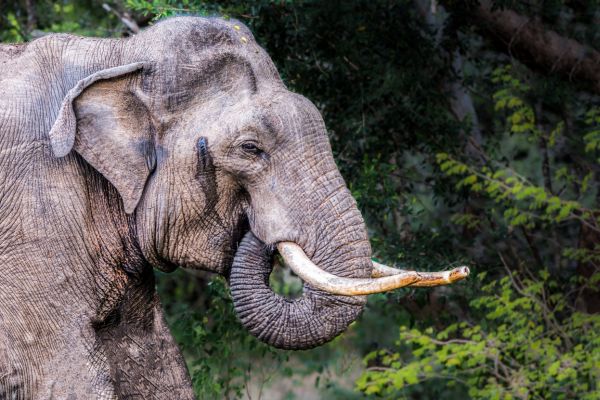 Climate and vegetation in Udawalawe
Climate and vegetation in Udawalawe
Udawalawe National Park lies on the boundary of Sabaragamuwa and Uva Provinces, between Sri Lanka's wet and dry zones, forming of marshes, forests and grasslands. The park has an annual rainfall of 1,500 millimetres, most of which falls during the months of October to January and March to May, and the average temperature is about 29°C.
Originally the region was forested, but as a result of former chena farming practices, plains of open grassland are abundant. Though, there are also some mountainous areas. The Kalthota Range and Diyawini Falls are in the north of the park, and the outcrops of Bambaragala and Reminikotha lie within it.
Species of trees include satin (Chloroxylon swietenia), halmilla (Berrya cordifolia), ebony (Diospyros ebenum) ehala (Cassia fistula), kolon (Adina cordifolia ), milla (Vitex pinnata), kon (Schleichera oleosa), kunumella (Diospyros ovalifolia) and lunumidella ( Melia dubia ). In the riverine forests, kumbuk (Terminalia arjuna) and the endemic mandorang (Hopea cordifolia) are dominant. Scrubs are dominated by damaniya (Grewia tiliaefolia), and in savanna grasslands mana (Cymbogon confertiflorus), illuk (Imperata cylindrical) and pogon (Pennisetum olystachyon) are common.
Wildlife in Udawalawe
This park is very famous for the Elephants (Elephas maximus). There are herds of elephant feeding in the grasslands. The Sambar deer (Carvus unicolor), Spotted deer (Carvus axis), Muntjac (Muntiacus muntjak), wild boar (Sus scrofa) and water buffalo (Bubalus bubalis) are re-establishing themselves. Other mammals include: toque macaque (Maccaca sinica) common langur (Presbytis entellus), jackal (Canis aureus), toddy cat (Paradoxurus hermaphroditis), leopard ( Panthera pardus) and black- napped hare (Lepus nigricollis) and small Indian civet cat (Viverricula indica), endemic golden palm civet cat (Paradoxurus zeylonensis), three species of mongoose (Herpestes fuscus), (H. smithi) and (H. vitticollis), an endemic shrew (Suncus sp.), gerbil (Tatera sp.), rat (Rattus rattus kandianus, soft-furred rat (Millardia meltada) and Indian bush rat (Golunda elliotti).
The avifauna includes large numbers of warblers (Prinia spp.), along with many usual lowland birds of forested areas, and a variety of raptors. Water birds found by the reservoir include some rare visitors such as Indian cormorant (Phalacrocorax fuscicollis ) and osprey (Pandion haliaetus). Notable endemic species are Sri Lanka spurfowl (Galloperdix bicalcarata ), Sri Lanka junglefowl (Gallus lafayetti), Malabar pied hornbill (Anthracoceros coronatus), endemic gray hornbill (Tockus griseus) and brown-capped babbler (Pellorneum fuscocapillum).
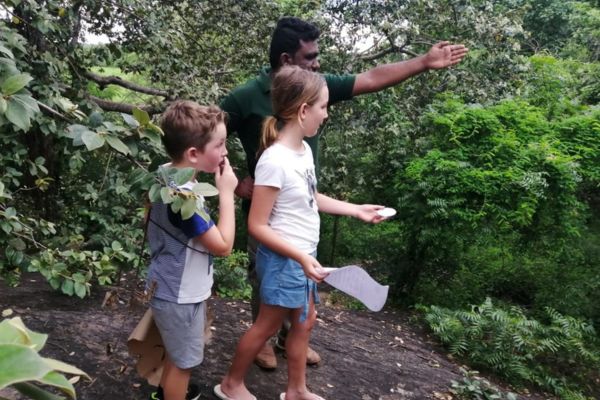
Safari at Udawalawe
There are 3 safari options available for the guest.
1. Morning Safari (6.00am)
2. Afternoon Safari (2.30pm)
3. Full day Safari
The safari would take place with an experienced guide in specially modified comfortable jeeps for unique safari experience. The tour could be more customized for guests for their preferences (Family safari, honeymoon safari, photography safari etc.).
Tour in brief
Initial meeting with the Eco Team crew and the safari guide, a brief of the tour will take place in the entrance to the Udawalawa Safari. For the morning half-day tour, the starting time will be at 6 a.m. while the afternoon tour begins at 2.30 p.m.
After entering the national park with your guide in a jeep, you will be able to spot several species of birds and other animals that have made their homes in this sanctuary. The guide will explain about the various interesting attributes as you will learn and enjoy about the flora and fauna of Udawalawe.
You will be taken through most of the Udawalawe National Park, covering the wetlands, grasslands, forest patches, etc. We will make longer stops at certain watering holes for unique photography opportunities.
Finishing the safari, either round 11 a.m. or around 6 p.m. you will be dropped at the park entrance.
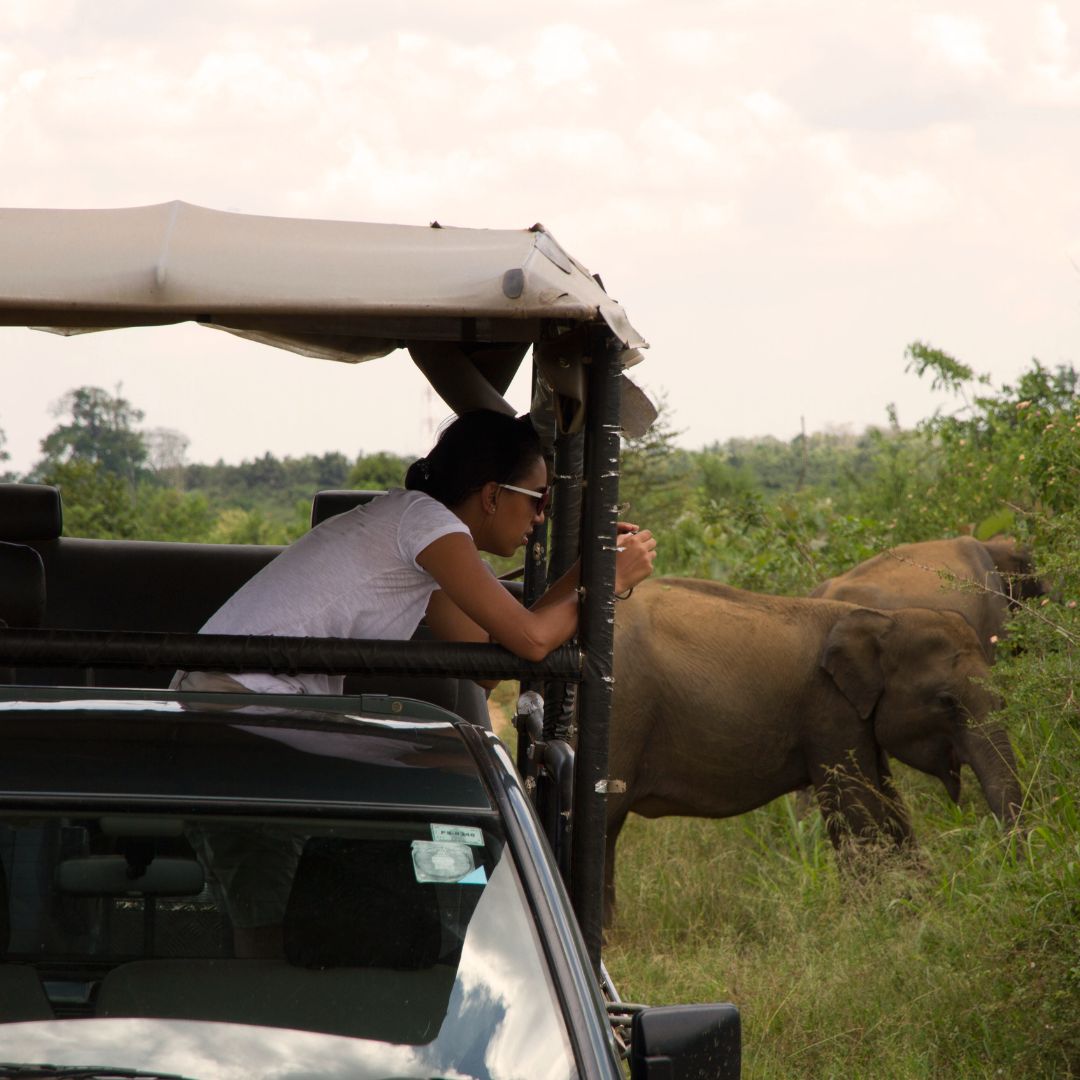 Udawalawe
Udawalawe
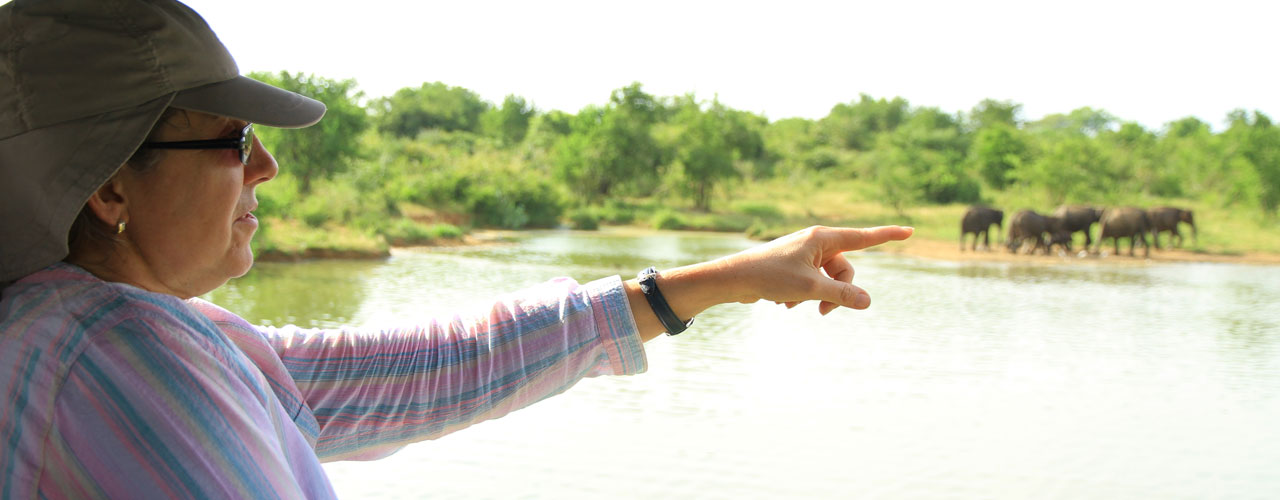
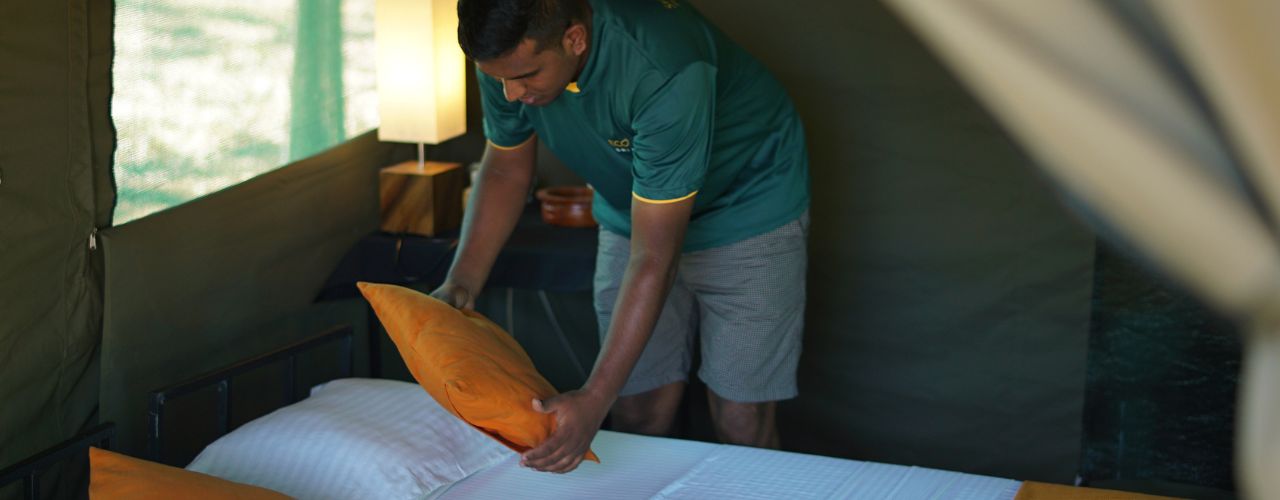
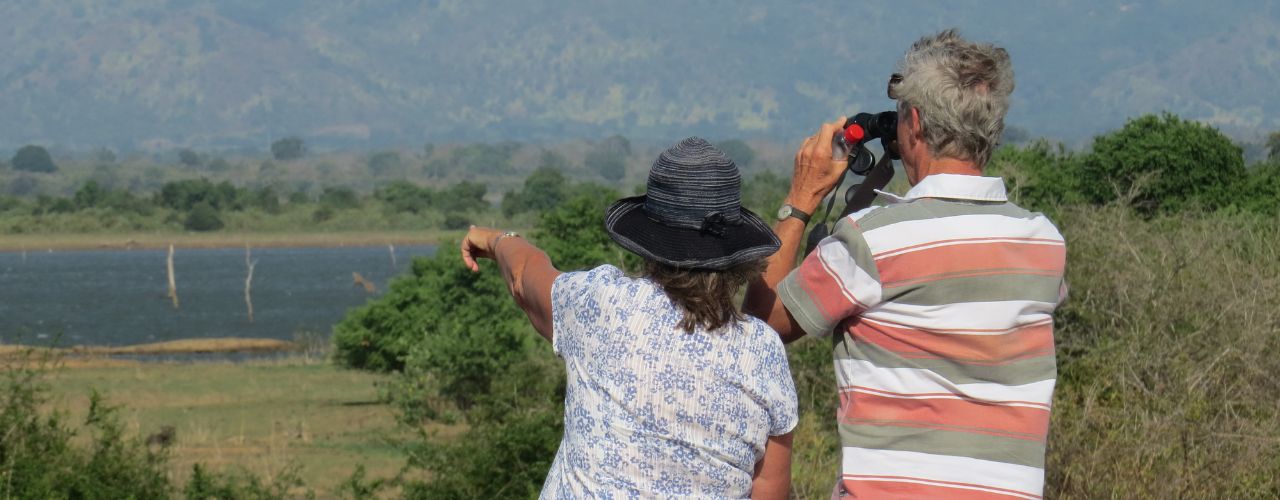
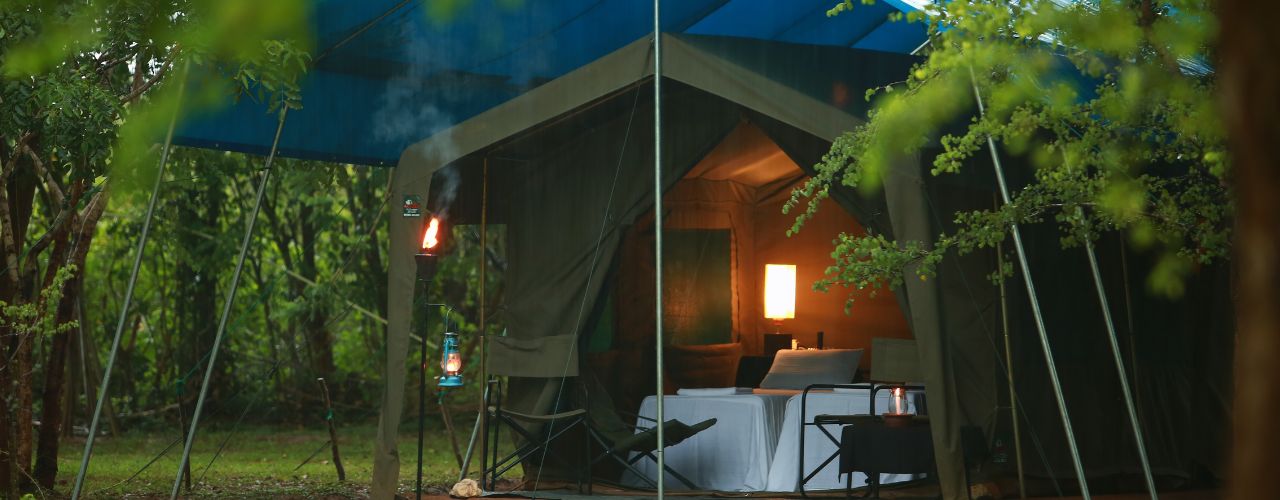
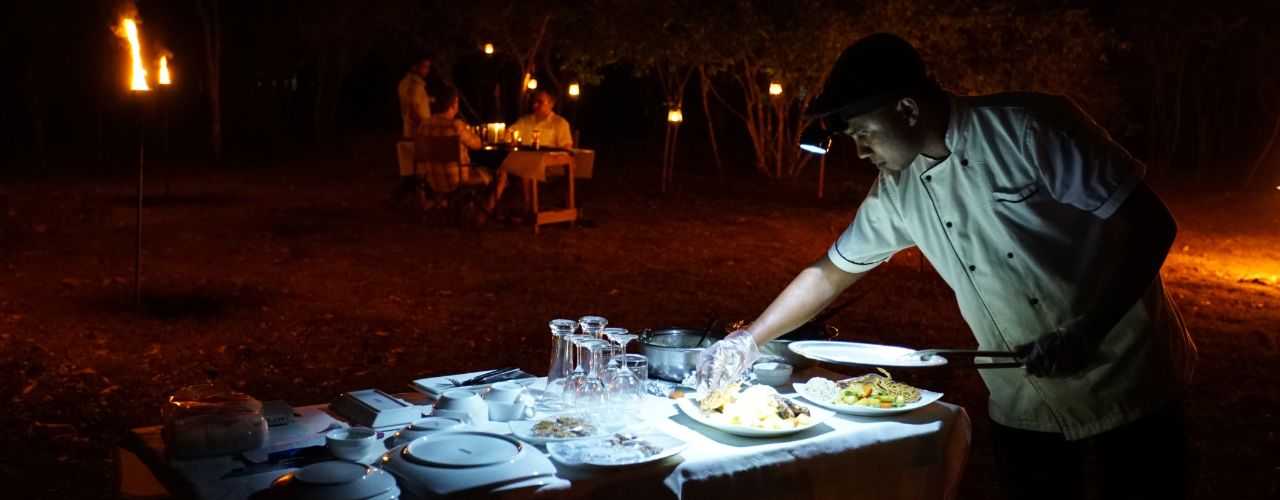
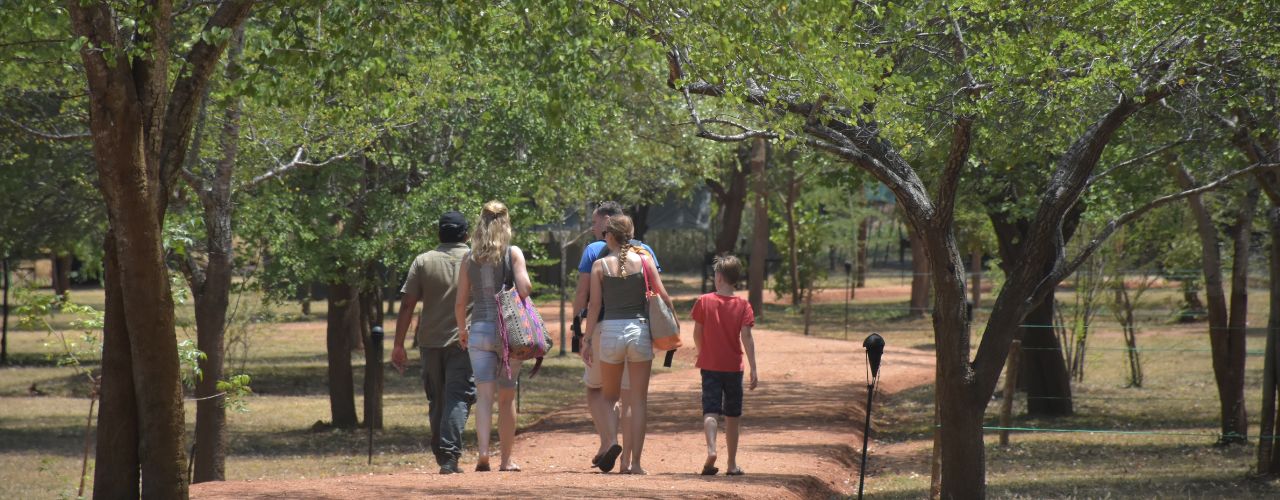



 Climate and vegetation in Udawalawe
Climate and vegetation in Udawalawe
